How to disassemble a submersible pump: popular breakdowns + detailed disassembly instructions
Own well on the site allows you to use running water without any restrictions - you do not need to choose a specific time to wash, take a bath, wash the car or water the flower beds near the house. Agree, it’s great when water always flows from the tap without interruptions and there is no supply / unscheduled shutdown schedule.
Water supply problems can occur if the pump breaks. Knowing how to disassemble a submersible pump, you can independently identify malfunctions and eliminate them at home. We will talk about how to properly diagnose a breakdown in this material. We will also consider in detail the instructions for disassembling the pump with your own hands, providing the article with step-by-step photos and useful video recommendations.
The content of the article:
Why does equipment break down?
Submersible borehole pump provides the convenience and ease of use of the well. It raises water from great depths to the surface, where it flows through the communications to the points of water intake.
Produce household submersible pumps domestic and foreign enterprises. Although the pumping equipment is reliable, breakdowns can occur from time to time during operation.
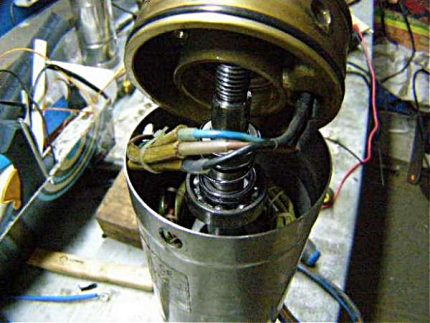
The debugged and clear operation of the submersible pump is often violated by the following reasons:
- high (over 50%) concentration of suspended particles in water;
- dry operation when the unit is operating without touching water;
- voltage drops above the permissible level that regularly occur in the network;
- poorly fixed cable connections;
- unit cable not correctly attached in the area of the wellhead;
- the submarine cable is not properly locked.
The absence of a filter or its too much pollution, unstable working provokes the occurrence of malfunctions pressure switch or poorly functioning accumulator.
In the absence of grounding, electrochemical corrosion affects the metal elements of the equipment. The pump stops pumping normally and requires immediate maintenance.
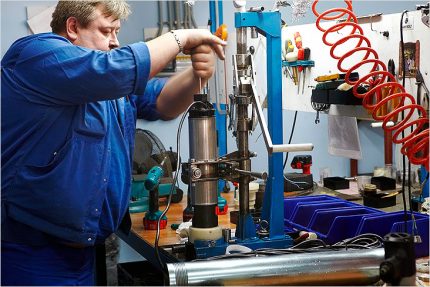
Very often the cause of the malfunction is errors made by users in the process pump installation and its operation. Manufacturers and service center employees recommend that customers immediately before connecting devices read the instructions carefully and strictly follow everything that is written there. This will avoid many problems and extend the life of the pumping equipment.
Overview of troubleshooting and troubleshooting tips
Any changes in the operation of immersion devices clearly indicate problems and malfunctions. Such moments cannot be ignored. Timely completed repairs extend the life of the device and ensure its normal functioning in a mode convenient for the owners.
You need to think about servicing the pumping unit if the following points are discovered:
- pronounced decrease in water pressure;
- increased noise from the well;
- intense casing vibration;
- pulsed water from the tap;
- increase in energy consumption;
- knocking out traffic jams upon activation of the unit;
- the buzz of the engine when the pumping is absent.
In this case, you need to remove the submersible from the well with a safety cable, disassemble, identify the area of malfunctions and eliminate them.
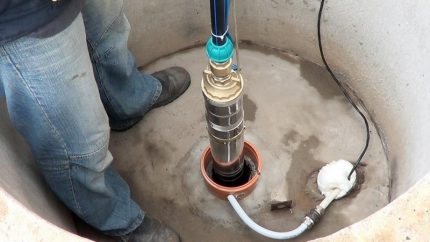
Moreover, the same malfunction is eliminated in different ways for different types of pumping equipment.
So, depending on the design features and the principle of operation, submersible pumps can be:
- centrifugal - they have the main element of the impeller ("Aquarius", "Water-thrower");
- swirl - similar to centrifugal, but they have a large circular velocity of the fluid ("Whirlwind");
- vibrating - the vibration element is the main element of the piston ("Kid").
Before moving on to popular pump failures, we suggest once again recalling their device.
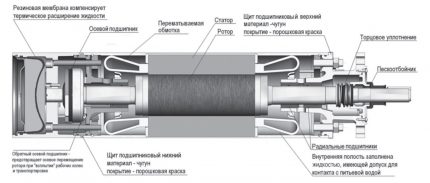
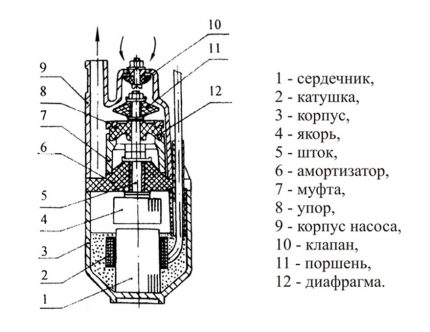
Next, we consider a list of frequent breakdowns of vibration and centrifugal submersible pumps, as well as recommendations for their elimination at home.
Problem # 1 - the pump is not working
If the device does not work, the electrical protection may have tripped. It is necessary to disconnect the device from the power supply, and then turn on the automatic plug again. Then you need to connect the electric pump to the network.
If the phase is knocked out again, the problem should not be sought in the submersible equipment, but carefully inspected the cable and fuses. In this situation, it is better not to connect the device to the network until the circumstances of the malfunction are clarified.
Blown Fuses Replace immediately. If they burn out again, the reason is pump power cable or in the area of its connection to the electric network. All of these items should be checked and any damages found. Only after full service can the pump be used again.
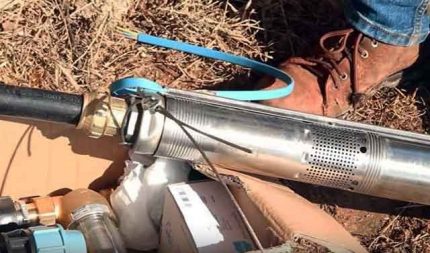
Problem # 2 - the pressure drops
A significantly reduced level of water pressure in centrifugal models clearly indicates excessive impeller wear, siltation or at its shaft offset. This situation also provokes mechanical filter clogginglocated on the suction pipe.
The solution in this situation is a thorough inspection of the impeller, cleaning the impeller and filter, and replacing a worn impeller.
A noticeable weakening of the pressure of the vibrators is caused by the suction valve that has ceased to close or the plaque of silt and sand that appears on it. The same problem occurs when the piston of the vibration mechanism loses its elasticity. Also, the cause may be a weakening of the mounting of the piston, shock absorber or electromagnet. All these nuances are eliminated at home without much effort - just tighten the mounts or replace the valve.
Or the reason for the pressure drop in vibrational and centrifugal pumps can be even simpler - low voltage in the network. In this case, installing the stabilizer will not hurt.
Problem # 3 - pulsed water, noise and vibration
The increased noise from the well indicates shaft breakdown or loosening nutsfixing the position of the rod on the shock absorber in the vibration pump. In the first case, the shaft must be replaced with a new one, in the second - tighten up loose mounting hardware with an improvised tool.
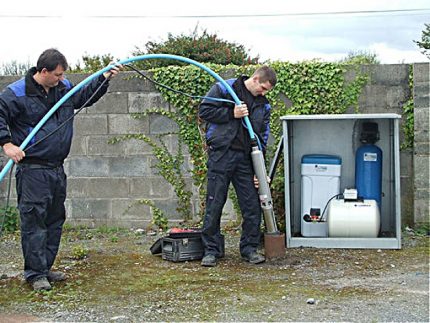
If the pump begins to vibrate violently and this affects the casing, it may be out of order shaft or stock. Equipment should be removed, disassembled and repaired damaged parts. In case of fatal damage replace with new ones.
Problem # 4 - power overruns
Noticing an unexpected increase in electricity bills, you should pay close attention to submersible equipment. May need impeller balancing submersible centrifugal pump.
Either silt or sand got into the case, and this caused mechanical friction. The load increased, and the unit began to consume more electricity to pump a standard volume of water.
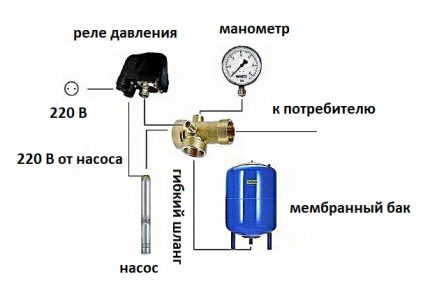
Increased consumption could provoke worn out screw cavity and bushings on the shaft of the screw assembly. They need to be replaced with new ones as soon as possible and the pump will return to work in the previous mode.
Problem # 5 - constant traffic jamming
Always triggered protection when turning on the submersible vibrating pump (knocking out plugs) - the result violations body tightness engine compartment. Moisture trapped inside adversely affects the control electronics and interferes with normal operation. The result is often a short circuit, followed by additional problems, up to burning equipment.
Also, the cause of knocking out plugs may be an open / short in the cable or coil of the electromagnet, overheating of the electromagnet due to low voltage in the mains, or false triggering of plugs.In this situation, it is necessary to replace the cable or coil (depending on where the malfunction is detected), check the plugs and replace them if necessary, install a stabilizer.
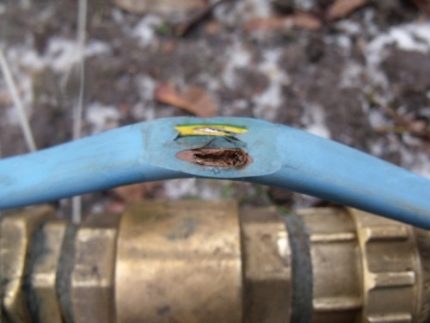
A centrifugal pump protects a short circuit stator windings or anchors electric motor and jamming apparatus with various particles of garbage. To fix the problem, you need to clean the unit from possible blockages, take it to the rewind to a service center or install a new coil.
Problem # 6 - the pump is buzzing but not pumping
When the submersible pump buzzes loudly, but does not pump water from the well into the communication system, there may be several reasons. May be, mains voltage dropped and the equipment simply does not have enough power for a normal start. If the voltage drop is typical for your region, it makes sense to hedge and establish stabilizer.
Other possible causes for centrifugal models are: impeller wear or siltation, loosening of the impeller to the shaft, clogging of the coarse filter, broken key that connects the impeller to the shaft. Also, if the pump has been stored for a long time without water, the impeller can “stick together” with the casing. Or dirt accumulates in the case and the device jams.
To eliminate these breakdowns, it is necessary to clean all contaminated elements, replace the defective ones with new ones, tighten the fasteners.
The same problem with the hum of an electric vibration pump can occur due to: valve or piston wear, electromagnet displacement, crushing of the shock absorber and loosening of its fastening. Repair work in this case will consist of replacing worn parts, tightening the fasteners, installing the electromagnet and shock absorber in place and their reliable fixation.
For troubleshooting, the equipment will have to be removed from the well, carefully inspected and repaired.
Detailed pump disassembly instructions
To identify and troubleshoot a submersible pump, it must be disassembled into its constituent elements. To do this, you need a spacious workplace and a stable wide table, a vice, a Phillips and flat head screwdriver, a set of keys and pliers.
The disassembly process is not complicated, but requires accuracy, scrupulousness and attention.
It is carried out step by step in a certain order.
When the pump part and the engine compartment are separated from each other, troubleshooting is much easier and more convenient.
The subtleties of disassembling the shaft of the pump section
To determine the exact location of the problem, try to turn the pump section shaft. If this is not possible, then the problem is there.
At the end of measures related to repair / replacement / maintenance of the pumping part, the equipment should be reassembled again, carefully following the instructions. Then connect to the engine and return to the workplace.
Step-by-step motor disassembly process
If at the two stages described above the problem area could not be identified, there is a good chance that it lies in the engine. To finally verify this, you need to do the following important steps.
Assemble the engine block following the instructions. Make sure that all the details are in their original places.
Characteristic failures of pumps of different brands
The equipment of popular domestic and foreign brands has its own characteristic breakdowns. Danish devices GrundfosDespite reliability and endurance, they need regular replacing mechanical seals. If this is not done in a timely manner, water will penetrate inside and damage the winding.
Serving the unit at home is not advisable. The specific design requires that repairs be carried out by a specialist with experience, ideally an employee of a branded service center.
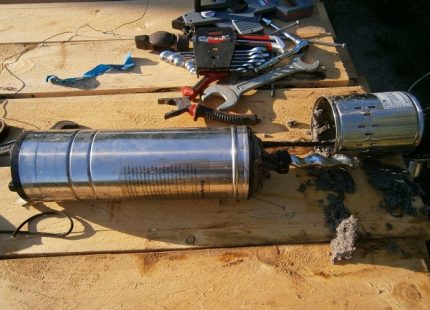
At units Jilex often fluid flows out of the motor. Its replacement is possible, but only with a similar composition.
Some masters believe that buying an expensive substance is not necessary. You can do with glycerin or transformer oil. However, this is not the best advice. The technique very poorly tolerates the filling with alternative means and can completely fail after such an operation.
It’s better not to repair the device yourself, but to entrust this task to qualified specialists. They are guaranteed to fill the original composition into the engine and do it in strict accordance with the wishes of the manufacturer. After service, it will work as well as on the first day of purchase.
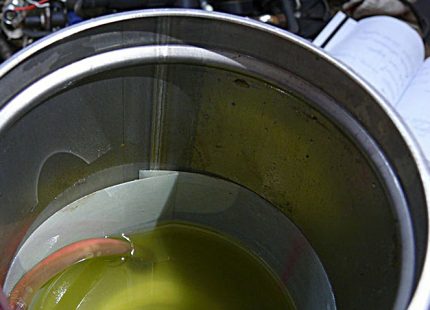
In devices "Kid" Livhydromash Russian enterprises often fail coils. Dry work provokes this nuisance. Loud noises generated when turned on without pumping water indicate breakage of the central axisto which membranes with an anchor are attached. This failure can be easily detected after disassembling the unit.
Replacing the axle even at home is not difficult. But finding a part on sale is indeed a problem.
Pumps "Aquarius" have the property overheatI am. This drawback is especially active when the equipment works in small wells. Repair is expensive and sometimes amounts to about 50% of the initial cost. Many users in such cases prefer to buy a new device, however, from another manufacturer.
The same problem is typical for models. "Trickle". Despite the modern design and compliance with current European standards, they poorly tolerate continuous operation.
The manufacturer says that the devices can continuously pump water for no longer than 7 hours. However, almost always such a load leads to overheating. To avoid problems, it is better to take breaks and let the equipment rest every 2-3 hours. In this way, the service life of the pump can be extended.
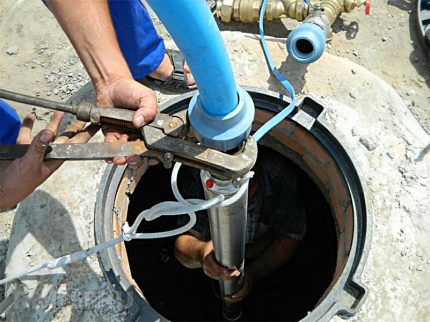
Pump equipment "Water cannon" It is considered sufficiently reliable and operationally stable. Most breakdowns here are due to misuse. Also, equipment in contact with contaminated water quickly becomes clogged with silt and sand. In this case, the pump part of the unit needs to be replaced.
When a problem arises that cannot be solved at home, you should seek the help of a professional service technician from a certified service center. They will quickly determine what happened to the equipment and restore its performance. Or they will recommend to purchase and put a new pumpif the old one is not repairable or it is not economically viable.
Conclusions and useful video on the topic
This video describes the process of disassembling a submersible pump. How to do it right and what tools are required for this, see below:
The pump is clogged with sand and does not pump water. How to deal with one of the most common problems of pumping equipment will tell the following video:
The pump in the well turns on, buzzes, but does not pump water. The two most common causes of this problem are discussed in the video below:
Knowledge of the rules for disassembling submersible pumping equipment will certainly be useful to owners of private houses with wells. Guided by the popular pump malfunctions, you can recognize the type of breakdown and fix it yourself. This is convenient when the service is far away, and the pump, for certain reasons, works intermittently and does not allow comfortable use of water.
Have you encountered a pump breakdown that we did not mention in this material and want to share your experience in repairing it? Tell us about it in the comments section, add photos demonstrating the process of troubleshooting, our readers will be grateful for your help.
Or do you need help diagnosing a problem? Ask your questions to our experts - use the feedback form below.

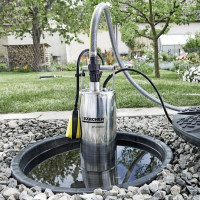 How to choose a pump for a well: recommendations for choosing pumping equipment
How to choose a pump for a well: recommendations for choosing pumping equipment 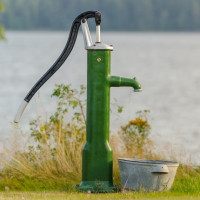 DIY manual water pump: a review of the best homemade products
DIY manual water pump: a review of the best homemade products 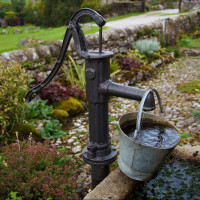 Hand pump for a well: types of equipment, characteristics, their pros and cons
Hand pump for a well: types of equipment, characteristics, their pros and cons 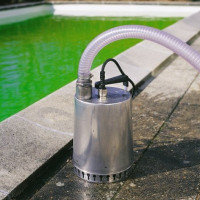 How to choose a pump for pumping dirty water: selection rules and an overview of the best models
How to choose a pump for pumping dirty water: selection rules and an overview of the best models 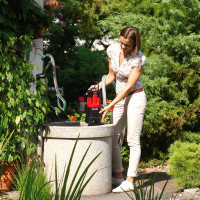 Choosing a pump for a well: how to choose a unit + an overview of the best brands
Choosing a pump for a well: how to choose a unit + an overview of the best brands 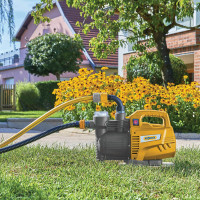 Rating of pumps for drip irrigation: TOP-12 of the best offers + recommendations to customers
Rating of pumps for drip irrigation: TOP-12 of the best offers + recommendations to customers 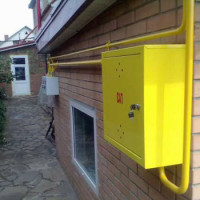 How much does it cost to connect gas to a private house: the price of organizing gas supply
How much does it cost to connect gas to a private house: the price of organizing gas supply  The best washing machines with dryer: model rating and customer tips
The best washing machines with dryer: model rating and customer tips  What is the color temperature of light and the nuances of choosing the temperature of the lamps to suit your needs
What is the color temperature of light and the nuances of choosing the temperature of the lamps to suit your needs 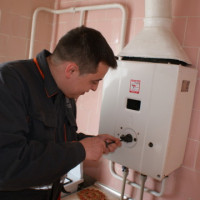 Replacement of a geyser in an apartment: replacement paperwork + basic norms and requirements
Replacement of a geyser in an apartment: replacement paperwork + basic norms and requirements